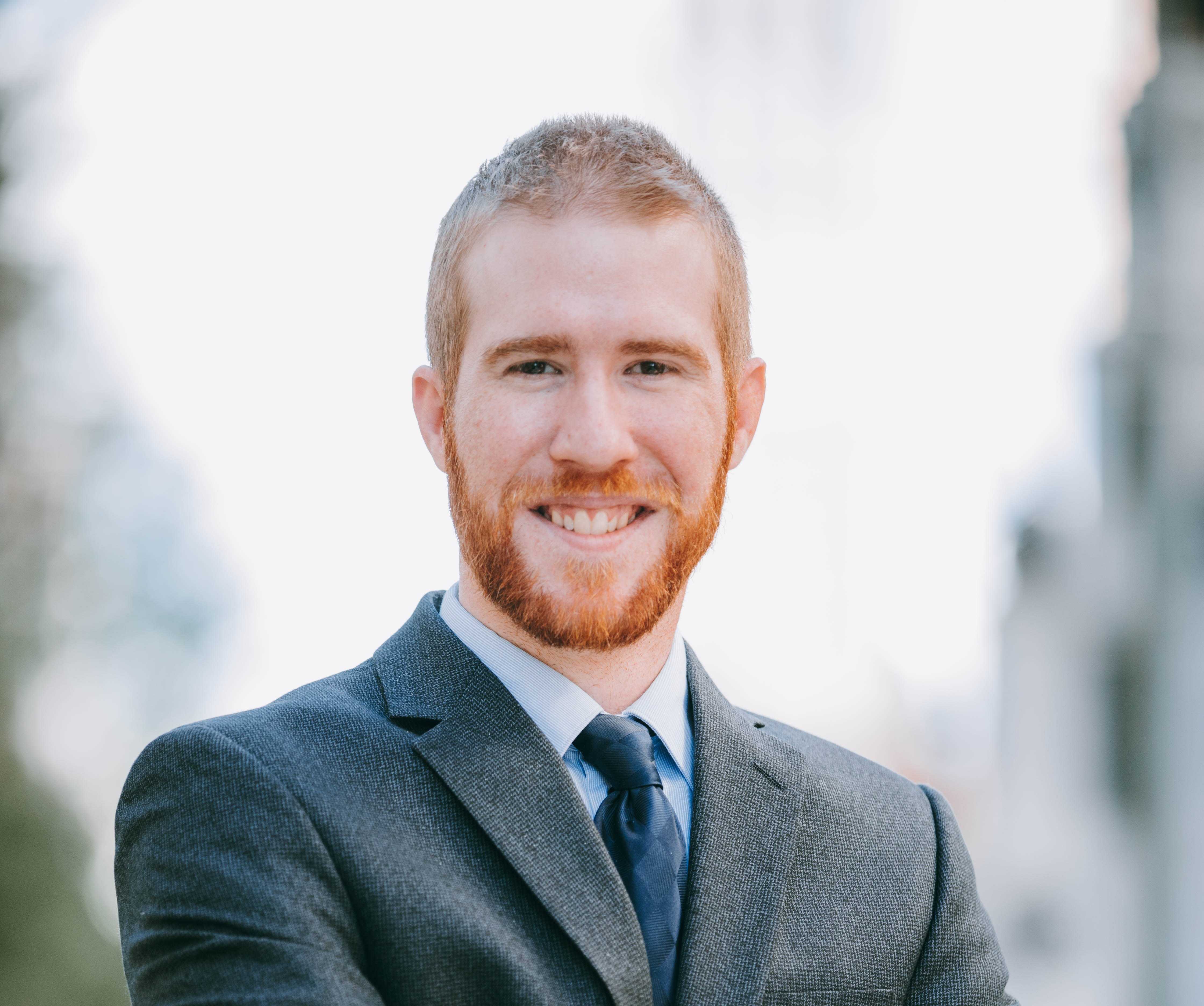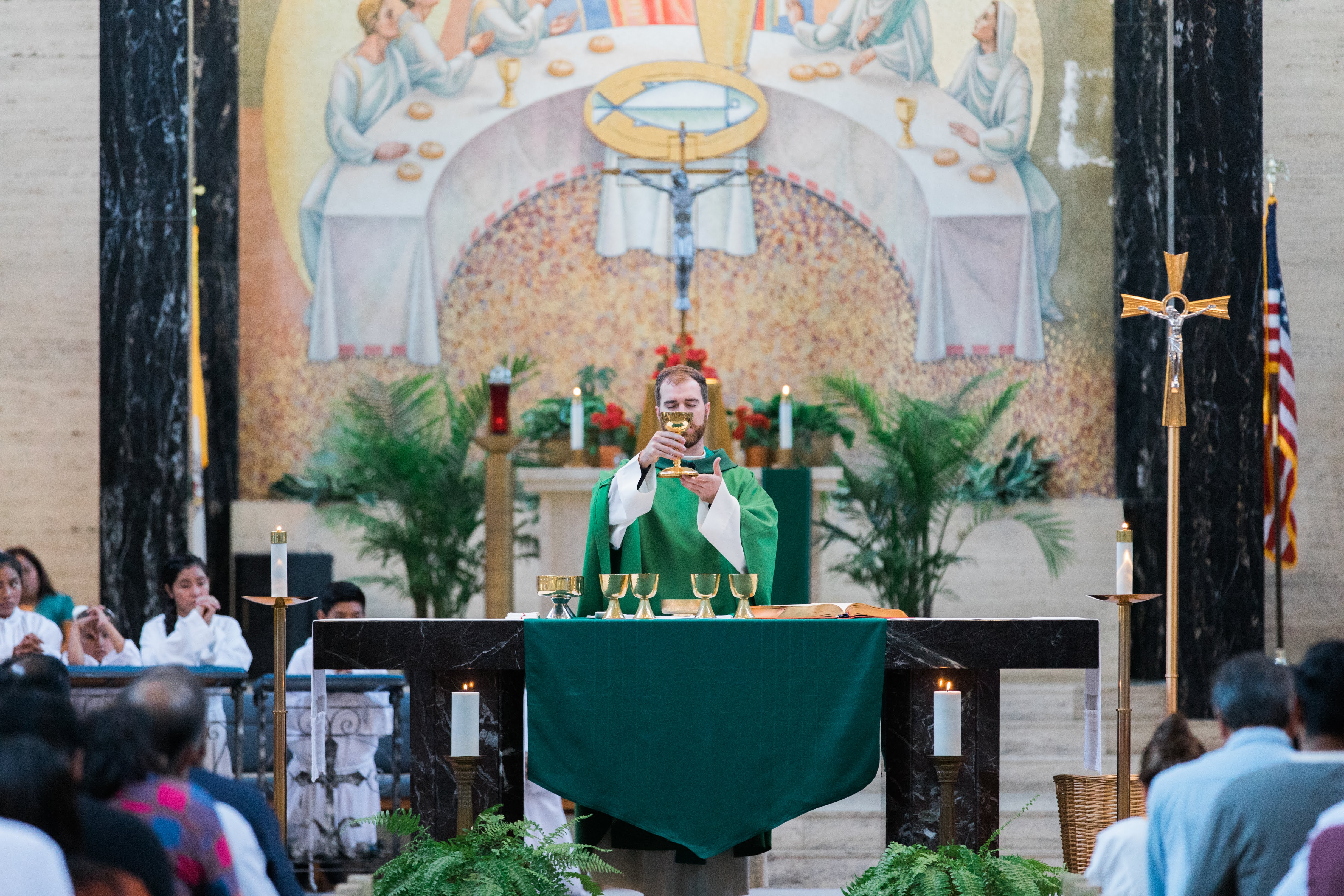Pastors may begin celebrating Mass with the faithful as early as May 19 with strict safety rules, including mandatory masks for attendees
DETROIT — Public Masses will resume for all parishes in the Archdiocese of Detroit on Friday, May 29, but individual pastors may, at their discretion, begin celebrating Mass publicly as early as Tuesday, May 19, according to new directives issued by Archbishop Allen H. Vigneron.
However, despite the reopening, “the Mass you may attend in the weeks ahead will look and feel quite different from the Mass you remember from two months ago” due to the need to continue practicing social distancing and rigorous sanitation, Archbishop Vigneron cautioned the faithful.
In particular, all of the faithful will be required to wear face coverings to Mass, keep at least six feet apart, and capacity inside churches may not exceed 25 percent, according to the directives issued May 12.
Importantly, the archbishop noted that the Sunday obligation — the moral and canonical precept that requires weekly Mass attendance — would continue to be suspended for all of the faithful until at least Sunday, Sept. 6. Parishes are also highly encouraged to continue offering livestream Masses online.
The gradual reopening of Masses comes two months after the archdiocese suspended public liturgies in order to stem the rapidly spreading COVID-19 virus, which has sickened more than 47,000 people and killed at least 4,500 in Michigan. Worldwide, more than 4 million people have contracted the novel coronavirus, resulting in more than 282,000 deaths.

Archbishop Vigneron said the new guidelines and directives for public Mass were formed in consultation with “expert advice from the medical community, liturgical experts, and public health leaders.”
“In recent weeks, we have watched with relief as our State of Michigan gradually opened to select businesses and activities, with prudent precautions firmly in place to prevent a severe ‘second wave’ of the coronavirus pandemic,” Archbishop Vigneron said. “In keeping with this gradual reopening of our society, it is necessary that we make similar arrangements within our local Church to allow once again for the communal celebration of Holy Mass, which at its core is the most ‘essential’ activity known to our world.”
In order to safely do so, the archbishop stressed the need for “strict adherence” to the new safety standards.
“It will be imperative for all of us — pastors, parish staff, volunteers, and all the faithful — to work together during these times,” Archbishop Vigneron said. “The pandemic is not over and these safety precautions must be followed in order to promote the continued health and safety of everyone in our community.”
Social distancing at church
In addition to wearing masks, the faithful (excluding those of the same household) will be required to keep at least six feet apart at all times when inside a parish church or on parish grounds. In order to do this, capacity will be limited to 25 percent — and in cases where the church layout requires it, less than 25 percent.
The 25 percent figure follows state guidelines for other types of buildings, such as retail stores.
In order to accommodate a larger number of faithful, parishes that have the means may open an auxiliary space — such as a parish hall or parking lot — for overflow seating, where a livestream of the Mass may be provided. Outdoor Masses are also encouraged, weather permitting, as a way to maintain social distancing.

In between liturgies, church facilities must be thoroughly cleaned and disinfected, and holy water fonts must remain empty.
“Through it all, we must remember that this virus does not discriminate between gatherings; a group gathered for sacred worship is not immune by the merits of its gathering,” the archbishop added. “It is only through our careful observance of these precautions that we make it possible to resume public Mass.”
Although the directives don’t mandate a way to enforce the 25 percent rule, suggested ways for parishes to do this include a “first-come, first-served” approach, or an online “ticketing” system to allow people to reserve seating. Pastors may also choose to offer additional Masses to accommodate more faithful.
Items such as missalettes, pew cards and hymnals may be removed from the pews to make cleaning easier, and the guidelines suggest limiting singing to “a small number of well-known songs, even those that can be sung from memory,” to avoid using hymnals where possible.
Collection baskets also should not be passed from person to person, but “drop boxes” may be set up for the faithful to make their offerings. Since the pandemic began, churches have struggled mightily with dramatically decreased offertories, despite online giving options.
Holy Communion
Perhaps a question most on the minds of the faithful as they re-approach the altar is how parishes will handle the distribution of Holy Communion.
Although receiving Communion at Mass is not a moral obligation, for the faithful wishing to do so, it will be an option.
Distribution of the Precious Blood will continue to be suspended — even by intinction (a practice whereby a priest — and only a priest — dips the host into the chalice before giving it to a communicant).

Because of the reverence due to the Blessed Sacrament, gloves should not be worn by either the minister or the communicant receiving, but priests and extraordinary ministers must wash or sanitize their hands before distributing the Eucharist. Hand sanitizer should also be available at the place of distribution.
Canonically, “the faithful have a right to receive Holy Communion in the hand or on the tongue,” the archdiocese’s guidelines state. However, because reception on the tongue “could cause concern for some parishioners following behind (in the line for Holy Communion) about spreading droplets to the fingers of the minister via breath,” parishes are advised either to designate a specific minister for those wishing to receive on the tongue, or to ask those receiving on the tongue to approach last for Communion.
The faithful should remove their masks before approaching for Communion, and the bow and verbal exchange (“The body of Christ,” “Amen”) should take place six feet apart.
If the minister accidentally touches a communicant’s hand or tongue, he or she should immediately pause and re-sanitize his or her hands before continuing.
In the case of outdoor or “parking lot Masses” in which the faithful remain in their cars, communicants should exit their cars to receive Communion, rather than the minister going car to car, to allow the minister to more easily sanitize his or her hands.
Other changes
As in the weeks before the suspension of public Masses, certain changes to the liturgy will continue, including the omission of the Sign of Peace.
Any lines — including the processional, recessional and Communion lines — should maintain six feet of distance between people. The offertory procession before the Eucharistic prayers should also be omitted.

Baptisms, weddings and funerals — which were originally suspended but have been allowed since April 30 — may resume without individual permission, in keeping with social distancing rules, the directives state. Non-liturgical gatherings on parish grounds should continue to be suspended, although pastors may grant special permission to groups of less than 10 people.
When Masses resume, “pride of place for attending these earliest Masses should be given to the elect, candidates for full communion, and those assisting these two groups for entrance into the Catholic Church,” the directives state.
Although no date has been given for when those who have completed RCIA — who normally would be received into the Church at the Easter Vigil — would make their sacraments of initiation, the archdiocese’s Office of Christian Worship will provide further guidance soon, it said.
With the changes offering hope to those who have longed to return to the sacraments, Archbishop Vigneron stressed that the new standards seek to strike a delicate balance between the spiritual needs of the faithful and the safety of all — particularly the most vulnerable, who often are those most drawn to the Church’s sacred liturgies.
“When this pandemic began, I directed priests of the Archdiocese of Detroit to suspend all public Masses as we assessed the situation and explored a safe way to bring Christ to the people, both through the Word of God and the Sacraments,” Archbishop Vigneron said. “This was an unfortunate but necessary decision in light of the severity of the pandemic and the number of unknowns associated with this new and deadly virus.
“Know that I have prayed during this time for you, the faithful of southeast Michigan, especially during my private and live streamed Masses,” the archbishop continued. “I pray you have felt the loving comfort of Christ as you awaited the day you could return to his Real Presence in the Eucharist. And I rejoice with you and thank God today as we move toward the gradual reopening of our parish communities.”
Read the detailed guidelines
For specific guidelines, directives and important messages regarding the Archdiocese of Detroit's response to the coronavirus crisis, visit www.aod.org/emergencyresponse.










